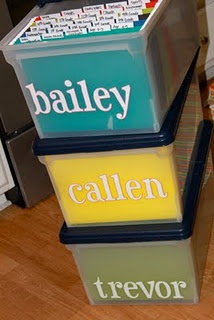Back to School... Again! How to Save Money and Time by Shopping at Home First
/One of my favorite things to do as a professional organizer and productivity consultant is introduce my clients to the concept of shopping at home. I know I’ve mentioned this before, but now that it’s back-to-school time, let’s dive into it with a little more depth.
When things are in their place and we know where that is, we tend not to become repeat buyers--as in purchasing things we already have. For example, when we buy dish soap we usually put it under the sink, right? When it’s gone we replace it, and so on. But when we’re buying items that don’t have an obvious place, sometimes they get stashed elsewhere and then we forget about them. How many times have you opened a low-rotation cupboard to find something you were looking for that you’ve maddeningly since replaced?
Getting ready for back to school is a perfect time to survey anything you may have tucked away “for later” and to shop at home in general. Before you head out with your kids to purchase all new stuff, do these few simple things to save your family time and money.
Go through clothes--including shoes and coats--with your children to establish what needs to be donated, what should be tossed, and what can be passed on to a sibling or friend. Children grow so quickly that they often don’t have enough time in the saddle to truly wear clothes out, so hand-me-downs at younger ages tend to be less worn. Once you’ve done this and have a solid idea of what they have, you’ll have a better concept of what they need.
If you didn’t do this at the end of the school year, now is the time to empty, clean, and spruce up backpacks. Shake them out outside, and use a damp cloth to rid them of crumbs and other mystery items. Good quality backpacks are essential for kids since they have to carry several textbooks every day, so if your child is making a move from a kid pack to a more adult version, look at what your family has for day hikes that might be suitable and let them trade up that way.
Go through last year’s school stuff to see what can be salvaged in terms of binders, folders, lined paper, pencils, markers, pens. Get rid of anything that doesn’t need to limp along for another year and then sort through what’s left. You can divide the used items among your children and then round out their needs by purchasing a few new things for each of them.
If you’re someone who buys things when they’re on sale to be used down the line, check out the area where you stash that stuff (with luck you know where that is!) to make sure you didn’t tuck anything away that would work for back to school.
Don’t head straight to department stores--see what you can find first in the world of discount retailers or thrift stores, especially for shoes and clothing. If your kids refuse to shop there, don’t hesitate to buy for them to try on at home; discount retailers all have super smooth return policies. (I have a friend whose middle-school daughter’s favorite jacket was a $3 thrift store buy. She just neglected to mention where she got it!)
Getting your kids ready for another year at school doesn’t have to break the bank. By shopping at home to reuse and upcycle you can save time and money while teaching your children valuable life lessons in the process. How’s that for a win-win?
Happy Organizing!















